Special to the Armenian Weekly
“Zhoghovurtn eh amenametz sdeghtzagortzoghuh, gnatsek u sovorek nrantseets.”
–Komitas
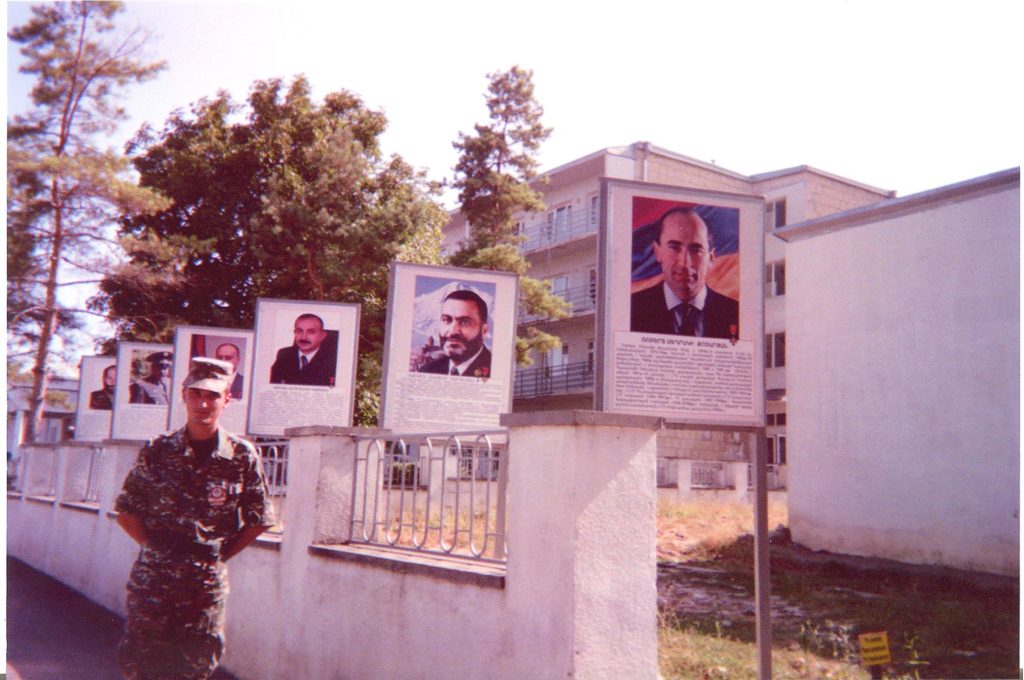
“The people are the greatest creators, go learn from them,” said the Armenian clergyman, musicologist, composer, choirmaster, and vocalist, Komitas Vartabed (Archimandrite). And it was from the people I talked to, both in Artsakh (Nagorno Karabakh) and in Armenia, that I learned of how they tried to create a better life for themselves and their families. They spoke of their aspirations and what they envisioned their future would be, as well as the future of their respective homelands.
In early Sept. 2017, I visited Artsakh. The ride from Yerevan to Artsakh was comfortable and smooth, only six hours, including short stops along the way—great progress since the 1990s, when the trip took much longer and was difficult. On Sept. 6, 2017, with jubilation and great anticipation, the re-opening ceremony of Stepanakert’s Armenian Relief Society (ARS) Soseh Kindergarten took place amidst a large gathering of clergy, dignitaries, ARS and Armenian Revolutionary Federation (ARF) officials and members, and citizens. Following opening remarks, prayers, congratulatory speeches, and good wishes by the various representatives, including one young student who had donated the money he had earned to his school, a reception was held inside the cheerfully decorated building. Upon visiting the classrooms on each of the floors, including the brightly painted basement, I marveled at what had been accomplished, especially under trying and, often times, uncertain and perilous conditions. In this mountainous and picturesque place, a dream had been realized because of the vision, determination, and efforts of people in Artsakh, Armenia, and the Diaspora.
In Artsakh, it is common to see couples with several, and even numerous, children. One couple I met had 11 children—the 12th had died five years earlier at the age of seven because of an epileptic seizure he had suffered in the middle of the night. The children ranged from ages seven to 24, with two of them serving in the military. The children and their parents lived in a small shack with no bathroom. The family’s toilet was a hole-in-the-ground near the shack. Their neighbor allowed them to use their bathroom for bathing. The reason for their situation was because the 50-year-old father lost his job and was unable to find another one. In order to support his family, he did odd jobs for nearby restaurants and any place that needed extra help. “The jobs I find are not steady and not full-time, but they are enough to buy food for my family, he explained and added, “but not enough for medicine, shoes, and clothes.” The mother, who was 45, took care of the family. One other child had epilepsy and two members of the family suffered from Familial Mediterranean Fever, also known as Armenian Fever. For the past four years, they have asked various officials and organizations in the area for assistance, with no results. In place of assistance, they, and other indigent couples with many children, were told: “Do not have so many children.”
In Stepanakert, one woman I met had six children. The young, single mother worked full-time as a waitress in a hotel to support her family. She explained, “If it were not for my mother, who watches the children while I work, I would not know what to do. One day, a few years ago, my husband left to find a better job he said. We have not heard from him since. Initially, it was both financially and emotionally difficult for me, and I cried all the time because he left. But, over time, little by little, I pulled myself together, thanks to my mother and her help. I will never forget the day she said, ‘My daughter, when your father died, I wept much. I wept both because I lost him and because you became an orphan. Since I had no one, and raised you by myself, I will not permit you to raise your children by yourself.’ With my mother’s support and encouragement, I found the job I now have and for that I am thankful.” As the young mother finished telling her story, I could not help but admire her and all the other families who had many children—five, six, seven, and more—for they are the country’s unsung heroes. Day in and day out, through the voices and footsteps of their children, they have helped instill hope, courage, and determination into their struggling homeland.
In Shushi, Ghazanchetsots Cathedral or Cathedral of Christ the Holy Savior (built between 1868 and 1887, consecrated in 1888), the primary cathedral of the Armenian Apostolic Church of Artsakh, stands across the street from a large apartment building with a number of vacant apartments. The locals had explained that the reason for the vacant apartments was due to the difficult economic conditions. “People,” they said, “left to find jobs elsewhere.” Upon entering the cathedral, I lit three candles and took a seat. A few rows in front of me sat a thin, young woman with her head bowed and a scarf draping her hair. Occasionally, she would whisper something as she looked up at the ceiling, then bow her head again. She did this a number of times. No one other than the two of us were in the cathedral on this weekday afternoon. From the number of candles that were flickering, melting, and melted, it was obvious that others had come earlier to pray in the cool, quiet, white cathedral—one of the largest Armenian churches in the world. Shortly after, with lowered head, the woman left. Finishing my prayers, I too left. In the distance, I could see her slowly walking with her scarf now in her hand, her shoulders yet slumped, and her head still lowered, down the path of the cathedral’s flower garden. As she walked across the street, she disappeared into the large building with its vacant apartments and countless untold stories.
Yet on another note regarding Artsakh, archeological excavations in various caves in the region, which had begun in 2011 by Professor Levon Yepiskoposyan, DSc, and his team from Yerevan, Armenia, had discovered ancient fragments of human fossil and other remnants. In 2014 and 2015, a team from the U.S.A. and Denmark joined the Armenia team, and in 2016 large scale excavation work began in different regions of Artsakh. Their work was published in an article titled “Eight Millenia of Matrilineal Genetic Continuity in the South Caucasus” in the June 29, 2017, issue of Current Biology. Currently, the scientists are preparing for this year’s excavations in Artsakh’s Karin Tak cave. (Anyone interested in learning more and supporting this significant project may contact Professor Levon Yepiskoposyan by email at lepiskop@gmail.com, or write to him at: Laboratory of Ethnogenomics, Institute of Molecular Biology, National Academy of Sciences, Republic of Armenia, 7, Hasratyan Street, 0014, Yerevan, Armenia)
In addition, Professor Yepiskoposyan continues his work on the Armenian DNA project “Genetic Atlas of Historical Armenia Project,” and is still collecting samples from Armenians whose paternal and maternal ancestors originated from historical or Western Armenia. Therefore, anyone visiting Armenia whose relatives were from Western Armenia may contact the professor for further information on how to participate in the project. During our 2016 visit to Armenia, my late husband, whose family was from Western Armenia, now present-day Turkey, donated his DNA sample to the project. “Murad’s was the first sample from Sepastia,” the professor had said. The professor recently gave an interview regarding the project.
As I strolled up and down the streets of Stepanakert, pausing to look at the buildings, shops, and cars passing by; at children walking hand in hand from school; at the flowers planted throughout the city; at tourists taking pictures; as I went from kiosk to kiosk admiring the fine workmanship and assortment of gifts for sale; and in the evening, as I watched families and couples chatting with one another as they promenaded in the square, while children played and young soldiers walked about the square, I thought: Artsakh—land of certainty and uncertainty, land of water fountains in the park rising and falling to music and shimmering lights of yellow, then green, pink, then red, blue then orange. Artsakh—land of history, tradition, and heroism, graveyards, churches, and families with many children. Artsakh—land of brave and selfless men as young as eighteen protecting their people and country. Artsakh—land of certainty and uncertainty, land of dreams, struggles, and sacrifices, where children know well their way to school and to the bunkers, where they have learned to sing and dance to the ancient music of the flute and their land.
Yerevan, the capital of Armenia, has changed much since I first visited the country many years ago when, among the Soviet structures, the buildings built around the turn of the 20th century, with some even earlier and others a little later, were more prevalent. The architecture of many of those structures gave the city not only a warm, old-world charm, but also a sense of history. Looking at such buildings, admiring the workmanship, even touching them, leaves one in awe of the people who designed them and those who built them. Unfortunately, some of those buildings have since either been razed, disfigured by construction surrounding them or with intrusive billboards. A few have small plaques mounted near entrances describing what renowned person once lived or worked in them. Now, new buildings, plain and large, with no distinct features, have replaced a number of the charming old and historic ones. In addition to the new structures, there are a variety of new businesses, an abundance of cell phones and automobiles, in short, a new city and a new way of life. For some, this new way of life is good—very good, for others—not so much, while for still others—not good at all. When I asked people, who said that they wanted to leave the country and live elsewhere why they wished to do so, each in his or her own way gave the same reply: “We cannot live for love of country alone. We need to eat, to provide for our families. We have no choice but to leave.”
And when I asked them, “Are there no jobs for you here?”
The reply, over and over again, was, “Jobs, what jobs? The factories that once employed so many are gone, and the good paying jobs are not for the average man and woman. Ours are jobs that barely sustain us.”
One man said, “I do not feel like I am anything here,” while another explained, “I worked in a European country for a while. It was hard work with long hours, but at the end of the week, after paying for my living expenses, I was able to put aside some of my earnings. Imagine, I was actually able to save money. Too bad my visa ran out, that is why I had to return. In a couple of years, I hope to try again and maybe then my stay will be permanent. You see, there I felt I had a future, but mostly, I felt like a ‘mart’ (meaning a ‘man’ or a ‘person’ in Armenian. In this case meaning a ‘person.’). In addition, I feel the situation in Armenia will only grow worse because the leaders live detached from the people…and the laws are not for everyone.” Upon hearing “The laws are not for everyone,” I immediately thought of the single-family home on a quiet residential Yerevan street I had passed by recently. The owner had extended his property onto half the street so that he would have a fenced, front yard. As a result, vehicles had difficulty getting in and out of that street.

Amidst all that was new in Yerevan, the comments people made about their lives and their future—from cab drivers, custodial workers, medical personnel, police officers, restaurant workers, store clerks, to street peddlers—were similar, with some stating their feelings more intensely and others more guardedly. Although what they said about their living conditions was at times similar to what people had said in earlier years, this time I noticed that something had changed in the people. I recalled the beginning and early 1990s—Armenia’s cold, dark, and often times hungry days—and what people had said and realized that the change I had noticed this time, and in recent years, was in their outlook, then and now. Even though the times were far more difficult in those early years, people would say, “We can and we will withstand our difficult state because we are at last a free and independent country, and we have hope for a better future!” These sentiments were expressed as we sat together by candlelight in frigid homes—waiting for the electricity to come on, waiting for the water to come on. Years later, the same people who had once spoken with such enthusiasm and optimism had grown not only older but weary and hopeless. The one who was the most enthusiastic and optimistic of all the people I had spoken with had said as we sat on rickety wooden chairs in his home—a place that had grown painfully shabby, “I was an engineer, my wife was a school teacher, and our life was good. Now, from morning until night, we both sell wares in the market and barely make ends meet.”
This time, some people spoke with frustration and anger, others with hopelessness and a firm belief that they had no bright future ahead of them. One young man, serving food in an eatery, said, “I am thirty-one years old and what do I have to show for it? I support my parents and younger siblings, something I have been doing since the age of nineteen. I work from morning until night and have nothing to show for my efforts—nothing at all! I dream of the day I am able to leave this country and live in a land, such as yours, where laws are followed, where I can become someone, where I can have a future…”
A 21-year-old cab driver said one afternoon as he drove me to the museum, “I have heard that America is a big ‘city.’ It is my dream to live in that big ‘city.’”
When I said, “But you may find it difficult to be away from your parents (he had explained that he was their only child and had to support them because his father was a disabled Arstakh war veteran and his mother was in poor health). Also, life in a far-away place like America is not easy. You have to learn the language and customs, and you have to have skills so that you can support yourself. In addition, being so far from home, you will miss your parents.”
The young cab driver thought for a moment and then replied with child-like innocence, “But I will not have a chance to miss my parents because I will bring them with me. I will work very hard there, just like I do here, but over there we will have a happy and good life.”
Of all the people I had spoken with, the words of one amazed me. He was a cab driver in his fifties, who had moved to Yerevan from Shamshadeen, in the Tavush Province of Armenia, to find work in order to support his family, who was unable to join him. The man, however, visited them regularly. When I asked him how he felt about Armenia and what his vision for her future was, he said, “I will never leave this soil and water and will defend it always! My sons are ready to defend this—our land, no matter what, whether one day good or one day bad. This is our land and we must never leave. There is no better soil and water than in Armenia. Let us not allow this land of ours to become ruined and barren. Look at our churches, our culture! We Armenians must all become one to protect and make this country prosperous and strong!”
In Yerevan, cabs are plentiful, the drivers are good, and the rides are inexpensive. One evening, as I was hailing a cab, it struck me that two special words I once heard often: “tsavt danem (let me endure your pain) had become a rarity, pretty much a thing of the past. As I rode in the cab, every so often making small talk with the driver, to my great surprise, I did hear those words. It was spoken by the twenty-four-year-old rooky cab driver, who stopped to ask a pedestrian for directions to an address that was unfamiliar to him. Such a small thing, two little words—tsavut danem—but so revealing about a culture. And the intention of those words continued when I got out of the cab. As I paid the driver, he said with thankfulness, “But you have given me too much, I do not know what to say.”
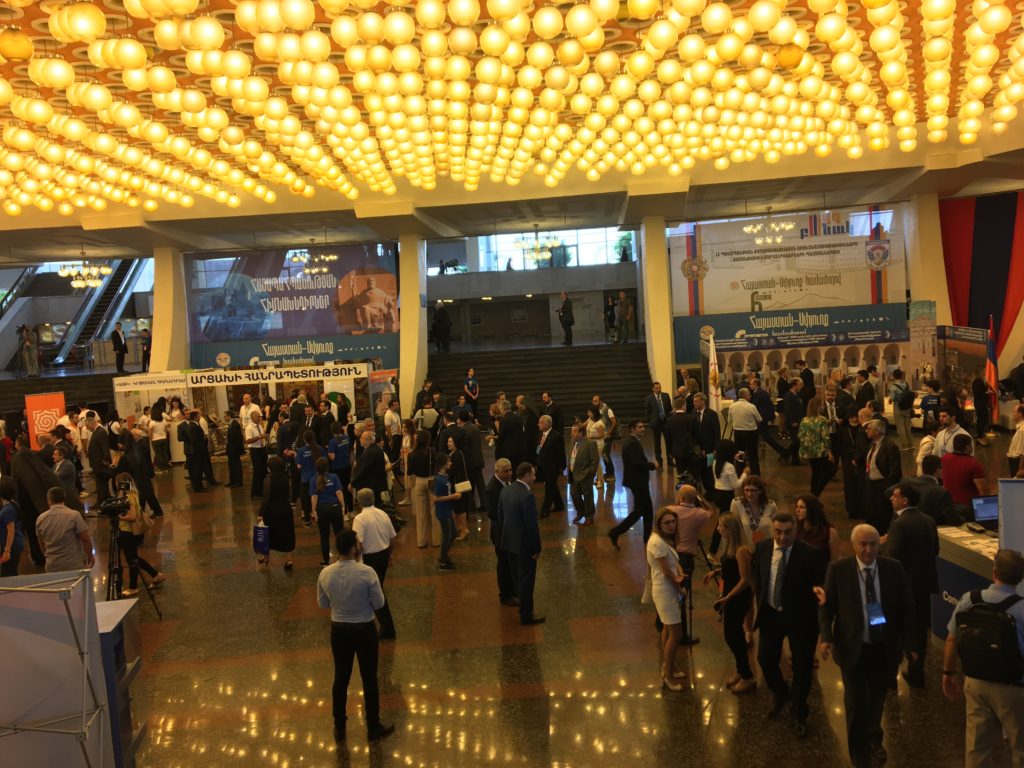
I replied, “Dzez baree yereko yev hajoghootyoon (Good evening and good luck to you.)”
After the cab driver drove off, I began walking up one street and down another in search of the place, I was to join some local friends at an event they were hosting. Since it was dark, it was difficult to see the numbers on the buildings. Suddenly, I felt a hand on my shoulder. Startled, I quickly turned to see who it was. A tall, local man—a stranger, asked me, “May I help you?”
I replied, “I am looking for this address but cannot find it, not even the cab driver knew for sure, and those I have asked do not know.”
The man studied the address on the slip of paper I had handed him and said, “Aree (Come), I will show you the place.” After we walked a short distance, he announced as he pointed to a building, “Here it is,” then opened the door and motioned for me to enter. With a smile and a bow, he said, “Have a pleasant evening.” Just as suddenly as he had appeared, he disappeared into the evening and the people strolling up and down the streets. Generally, I found such acts of kindness and helpfulness far more often than not. It was like this in earlier years and, fortunately, it is still the same today. It is a part of the culture of Armenia and her people. It is a wealth they possess, a wealth no one but they alone can lose.
One sunny morning, I visited Warm Hearth (Jermeek Ankyoon), a group home in Yerevan for adult Armenian orphans with disabilities, both physical and mental, and some with psychiatric problems. The long-term home was started in 2006 by former Peace Corps worker Natalie Bryant-Rizzieri, who, for two years, had worked in an orphanage in Kapan. While there, she saw the desperate need for a home for the adult orphans she had come to know and care about so deeply. At Warm Hearth, the adult orphans are provided with individualized care, education, and training in a supportive and nurturing environment. The residents study story-telling techniques, learn traditional Armenian songs and dances, paint, sculpt, do needlework, and weave carpets. Warm Hearth, a cheerful and welcoming home, is a place worth visiting, for there one can witness what can be done by those who care enough when society says, “There is no hope or future for that person.”
Shortly after visiting the group home, I had the opportunity to visit the Fund for Armenian Relief (FAR) home for orphaned, abused, and neglected children. As in the previous example of a caring and nurturing home, this facility demonstrated a similar passion for helping, in this case, children and teenagers in desperate need, and educating and guiding them to become productive adults.
Yerevan is an interesting city to tour on foot. One afternoon, as I neared one of the busier streets I had often passed during the months I was there in 2016, I spotted the familiar flower stand, where just a little over a year ago an elderly woman from the regions sold flowers from morning until evening. This time, instead of the woman, her daughter, who had a passion for books, was selling the flowers. I noticed that of the businesses I had frequented then, a couple of them had since gone out of business, one was remodeling, and the others remained the same. A few blocks further up the street, an elderly man, frail and stooped, was selling dusty, used books and booklets on a street corner. I approached his small, wobbly stand and began looking at the items. “All these books are very good, even the illustrated children’s booklets,” he said in a soft voice as he gently touched each one of them.
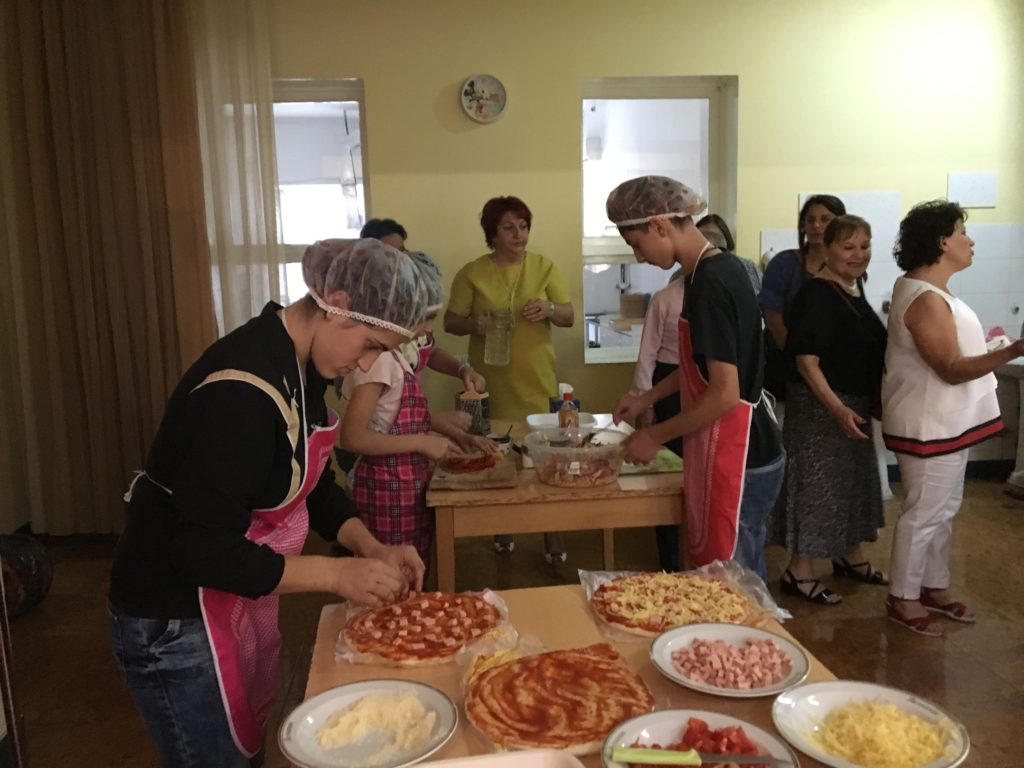
Pointing to my selections, I said, “I will take these three books and those five booklets.” After he carefully put them in a used, plastic bag, I placed money in his hand.
“But you have given me too much,” he said, and handed some of the money back to me.
I shook my head and gently placed the money back into his hand and said, “Dzez baree or u baree ashkhadank (Have a good day, and good work),” and continued my walk. It began to rain, so I hailed a cab. The cab driver, who said he had been a chef, was thirty years old. I asked him why he changed his profession. He replied, “My family and I could not live on my chef’s salary, so I became a cab driver. Though the hours are very long—from early morning until late at night, often seven days a week, I now earn a little more, but as hard as I try, I, and others like me, have no future here.”
When I asked him if he saw any improvement in the country in the past few years, he paused and then replied, “I see more greenery and flowers in the city, nothing else, nothing that is improving my life and that of my family’s.”
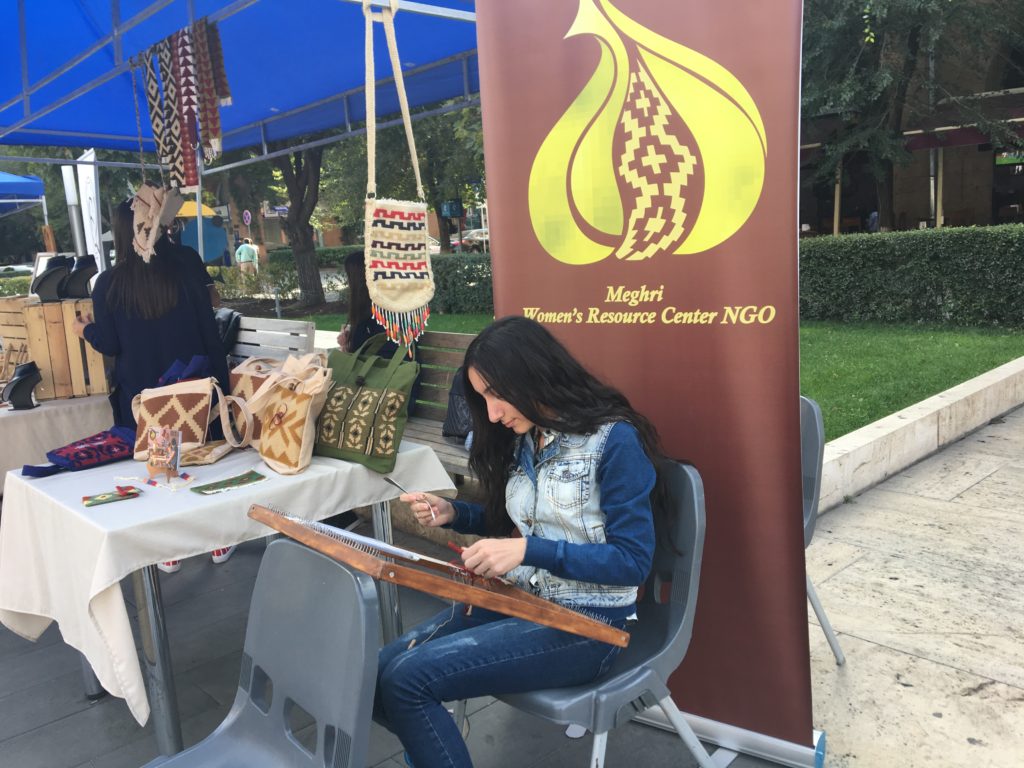
As I stepped out of the cab and walked toward the apartment building where I was staying, all the while thinking of what the cab driver and others in similar situations had said, I thought, while greenery and flowers are nice, pleasing to the eye, it is the people who make this ancient country so fine. Without them, what do we have? Just then, a few memorable moments I had recently experienced in Yerevan came to mind. One was at a nearby grocery store I frequented, where in one corner of the store, a female moneychanger worked in a booth. Each time I went into the store, no matter how many people were in line waiting to change money, she had a smile on her face. One day, I said to her, “Barev dzez, garmeer arev (Greetings to you, red sun [meaning sunshine], as I handed her dollars for drams, and then added, “You always have a smile for everyone!”
A local man in a loud, deep voice standing behind me, bellowed, “You know, she is right, the lady in there does have a smile for everyone!” Others, who were also in line, agreed with a robust, “Ha, ha (Yeah, yeah)!” The moneychanger smiled an even bigger smile.
Another, was the day I had asked a couple of police officers, one in his late twenties and the other in his early thirties, for help in finding a cab because all the cabs I hailed had passengers in them. They quickly obliged. One ran in one direction and the other in another direction. After quite a while, the officers returned together with a cab. The younger one said, “It was very hard finding a cab that was available.” As the older one opened the door for me, he turned to the driver, who was no more than 20 years old, and said sternly, “Make certain that our guest from overseas arrives home safely!” Both officers had served in the military in Arstakh, and now were serving the people in Yerevan. As the cab driver came to a stop across from where I was staying, he said, after I paid him and was about to step out of the cab, “No, wait, let me open the door for you! Now, take hold of my arm so that I can walk you across this busy street. The officer told me that I am to make certain that you get home safely,” and then he waited for me to enter the building.
The most moving of all the moments I experienced in Armenia’s capital, and in the regions, were when smiles appeared on the faces of people when I asked them, “How are you today and how is your day going?” And, after a brief chat with them, I would say, “Dzez baree or,” at times adding, “oo baree ashkhadank!” Upon hearing those words, their faces would light up, as if the world’s wealth had been handed to them. In turn, they would say with the warmest of smiles, “Thank you, and I wish you the same!”
A couple of women I had spoken with, one divorced and the other widowed, told me about their lives. Both were physicians, one was childless and the other with two school age children. Their stories were similar. One said, “My husband was a good man, an educated man, but when he drank, he became brutal…” The other said, “Though he was highly educated, and could be really nice and so charming, my husband drank too much. I nearly died from his beatings…” As they described their heartrending ordeals, I recalled the words of the Armenian clergyman, writer, and famed Chicago orator, Mangasar Mgurditch Mangasarian (born in Turkey, in 1859, died in the U.S. in 1943), who had written in the early 1900s: “The degradation of woman breaks the wheels and wings of civilization and blows out the lamp of progress.”
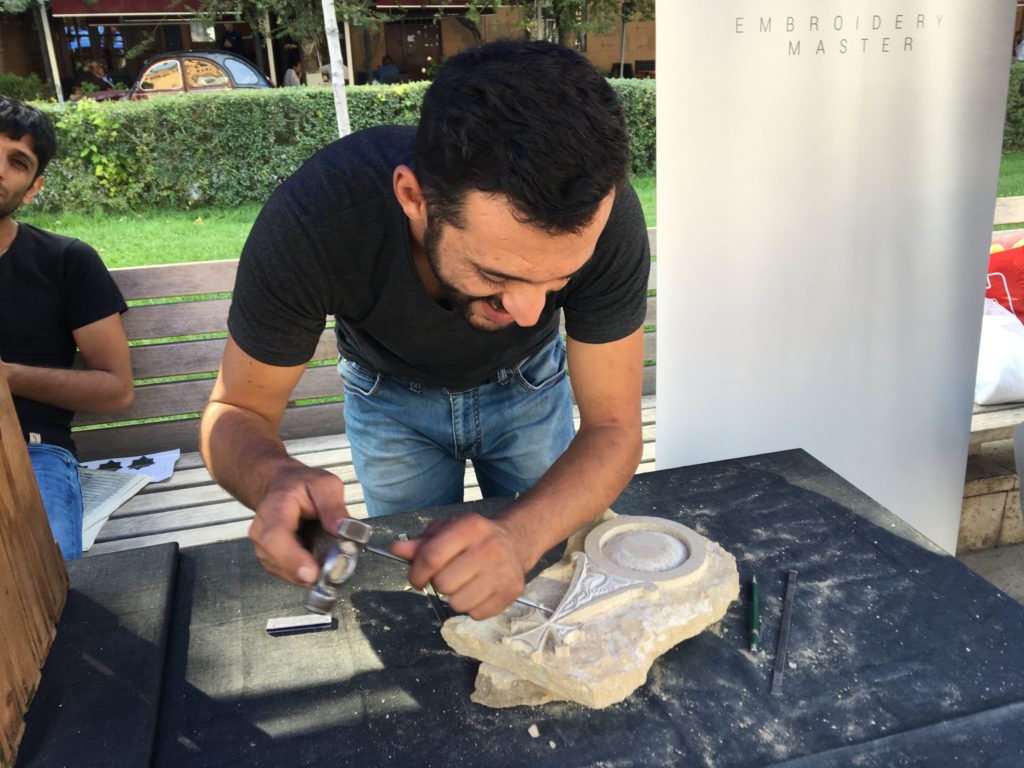
The conversations I had with people in Artsakh and Armenia, and my impressions of what I saw and experienced, were on my mind when I attended the 2017 Armenia-Diaspora Conference in Yerevan (Sept. 18-20) at the huge and uniquely designed Karen Demirchyan Sports Center (opened in 1983). The day before the conference, attendees were invited to a lavish dinner and musical and cultural program at the Paravon Banquet Hall, hosted on behalf of the Republic of Armenia’s Diaspora Minister, Hranush Hakobyan. In attendance were clergy, dignitaries, musicians and singers, and special guest Garo Paylan, Armenian member of the Turkish Parliament.
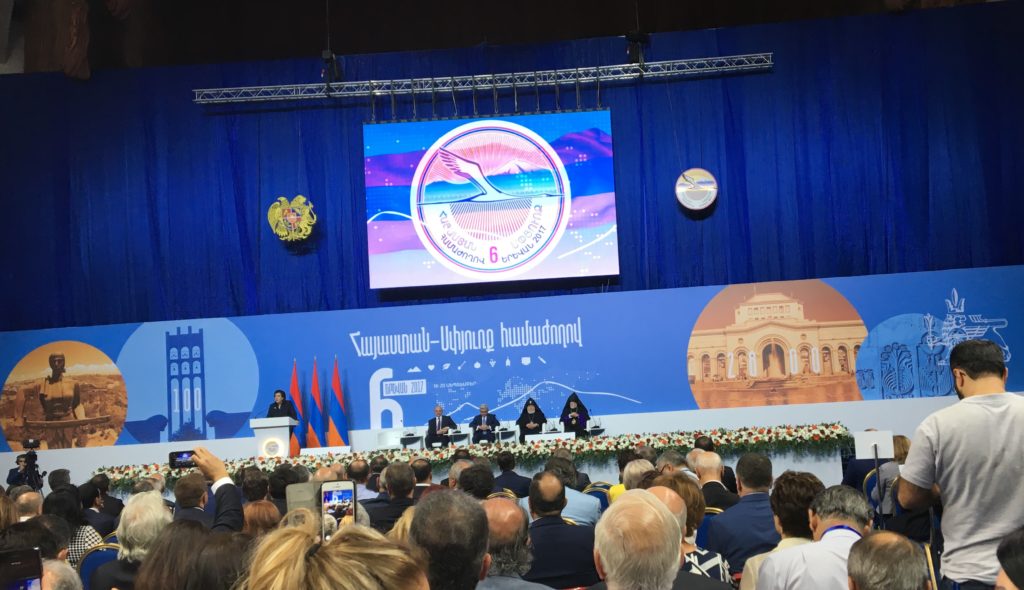
The following day at the conference center, attendees from 71 countries, and Armenia, were ushered into a large hall, where conference packets were provided, and Mrs. Hakobyan welcomed everyone. His Holiness Karekin II, Catholicos of All Armenians, after offering prayers, spoke of the importance of unity and working together for the betterment of the country, the economic conditions in Armenia, and the situation in Arstakh. He concluded by saying that “The strength of our homeland lies in the unity between Armenia and the Diaspora.” The President of the Republic of Armenia, Serge Sarkisian, briefly discussed the conflict in Artsakh, the progress being made both in Armenia and Artsakh, welcomed Diasporan Armenians to settle in Armenia, and added that he aimed to encourage population growth. He mentioned that the country’s situation, as well as the laws, have improved, and that Armenia is for all Armenians. The president also spoke of global migration, and that someday Armenia would become a progressive, strong, and successful country. The President of the Arstakh Republic, Bako Sahakyan, discussed the importance of the conference, and urged working together diligently to improve and strengthen the homeland. His Holiness Aram I, Catholicos of the Great House of Cilicia, outlined the grave issues that face both the homeland and the Diaspora and urged unity. He spoke of the situation in the country, both its negative and positive sides, and added that “Armenia is emptying and the Diaspora is wearing out…Armenia is not a tourist or business center…It is a country with a rich history, so we must help it bloom…Artsakh is in an uncertain situation—no war, but in danger of one, and for that reason Armenia too is in danger…Our strength lies in our unity and military… Let us never compromise our nation’s values!” His Holiness concluded his talk with a quote by the Armenian poet, Hovhannes Shiraz (Hovhannes Tadevosi Karapetyan, born in Gyumri in 1914, died in Yerevan in 1984): “Armenians, enough of remaining separated, like fingers; become a fist…and you will make Armenia eternal!” His Holiness received a standing ovation.
During the span of the conference, some of the other speakers were: Artsakh Foreign Minister Karen Mirzoyan, Foreign Minister Edward Nalbandian, ARF Bureau’s political representative, Armen Rustamyan, Defense Minister Vigen Sargsyan; clergymen of various ranks of the Armenian Apostolic Church, clergymen of the Armenian Catholic Church, the Armenian Mkhitarist Congregation, the Armenian Evangelical Church, and the Armenian Missionary Association (AMAA); the Armenian General Benevolent Union (AGBU); the ARS; the Hunchakian Party; the Ramgavar Party; journalists, educators, scientists, engineers, and businessmen. The topics discussed during the conference were: Issues on the Development of Armenia; Specifics of the Defense Policy of the Republic of Armenia Amid the Current Challenges; Foreign Policy Agenda; and Issues on the Preservation of the Armenian Identity. The upcoming 100th Anniversary of the First Republic of Armenia and the heroic May Battles were mentioned by many of the speakers.
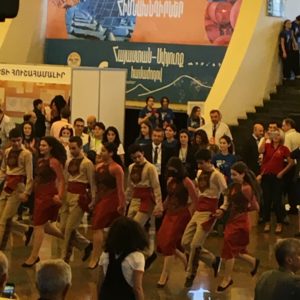
Luncheons at the conference center were hosted by the Minister of Diaspora, the President, and Prime Minister. During luncheon breaks, attendees visited the various display booths, watched school children demonstrate their skills at robot building, and enjoyed programs of traditional Armenian music and dance performed by the local youth, followed by concerts in the evenings. During the breaks, I took the opportunity to meet and talk with some of the attendees. One was an artist from Lebanon, whose paintings were showcased at the center. Another attendee had come from Myanmar because she said her grandfather had been Armenian. And another had come from Kazakhstan. His name was Alexandr Garabedyan. He and his wife Arevik, and son Grigor, lived in the city of Atyrau (Armenian population 400), the “old capital of Kazakhstan,” near the Caspian Sea. Alexandr was the grandson of Genocide survivors from Kars (northeast Turkey), who eventually made their way to Georgia, Uzbekistan, and finally Kazakhstan. He described in detail the ordeals and sufferings of his grandparents and how they escaped to safety. He talked about his life and explained that when he was growing up his parents and grandparents did not emphasize their nationality, but rather the importance of religion and education. Being curious about his heritage, and having a large library in their home, he began reading the history of the Armenian people. The more he read and learned, the more he realized that being Armenian was very important to him. As a result, two years ago, Alexandr, seeing the need for the Armenian youth of the city to learn about their heritage, gathered the Armenian community together to discuss the importance of having a Sunday Armenian School. Within a short time, a Sunday school was opened and Alexandr became the teacher. His students learn Armenian, as well as Armenian history, music, and traditional dance. He also organized an Armenian theater, produced a piece on the Armenian Genocide, and is the community’s choir director. Alexandr explained that the Sunday school is open not only to Armenians, but also Russians and Kazakhs. When I asked him why it is open to all, he replied, “For the purpose of publicizing and teaching the Armenian language, culture, traditions, songs and dances to others too. In addition, I want to promote spiritual life and encourage the youth to live normal lives away from the constant lure of gadgets and computers.”
The day after the conference, heads of organizations and select attendees were invited to a reception hosted on behalf of the President of Armenia. On the carefully manicured grounds of the Ministry of Defense, the president welcomed the guests, spoke briefly of Armenian matters, and left for another engagement. The event ended with a fireworks display.
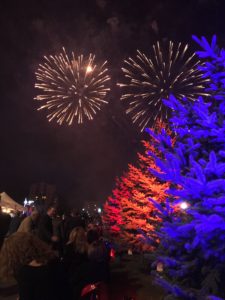
Not long after the conclusion of the conference and special events, I reflected on what had transpired during those few days and realized what a truly momentous occasion it had been. Armenians from all over the world had gathered together in one place, on Armenian soil, only months before the 100th Anniversary of the Declaration of the First Republic of Armenia, the 100th Anniversary of the May Battles of 1918, and the 2,800th Anniversary of Erebuni (Yerevan) to discuss issues pertaining to the Armenian people and nation.
A few days later, I met with Professor Yepiskoposyan, who discussed in more detail the work he and his team were doing in Arstakh, and also the Armenian DNA project. Soon after that meeting, I received a call from documentary film producer, author, and journalist, Tigran Paskevichyan, who said he had read my article titled “A Glimpse Into The Life Of The Armenian DPs In Europe,” published in The Armenian Weekly, and wanted to discuss my family’s story and life in the DP camp with him. Soon after, I had the privilege of attending the screening of his documentary, “Last Dream or Game Over,” about the Armenians who had repatriated to Armenia in the 1940s. The film was recently shown in California.
Toward the end of September, the opening of the Wigmore Clinic, a new and cutting-edge medical facility in Yerevan, was attended by locals, Diasporans, the President of Armenia, the Minister of Health, and other dignitaries. The leading partner members of the medical facility are Dr. Garen Koloyan, Head of Pediatric Orthopedic and Spinal Surgery, Dr. Hayk Avagyan, Head of Adult Orthopedic and Sports Surgery, Dr. Zaven Koloyan, and Dr. Francois Antounian of San Francisco. The much-needed medical facility “will provide spinal and orthopedic surgery for private and pro bono patients, and is the only clinic in the entire region, including Russia, with a state-of-the-art gait laboratory for diagnostics…Wigmore Clinic will also provide medical services to people from outside of Armenia, and has already treated patients from Russia, Georgia, the United Kingdom, Iran, and Dubai.” The clinic has been the “culmination of the efforts of Armenian, European, and American physicians working closely with Wigmore Medical to bring to Armenia a strong and modern center of advanced orthopedics, sports trauma, and spinal surgery for adults and children.” In addition to the gait laboratory, the medical facility has two operating rooms, patient rooms, an ICU, consultation rooms, CT scan, X-ray, 3D C-Arm machines, an ophthalmic and vascular surgery center, and a pharmacy.
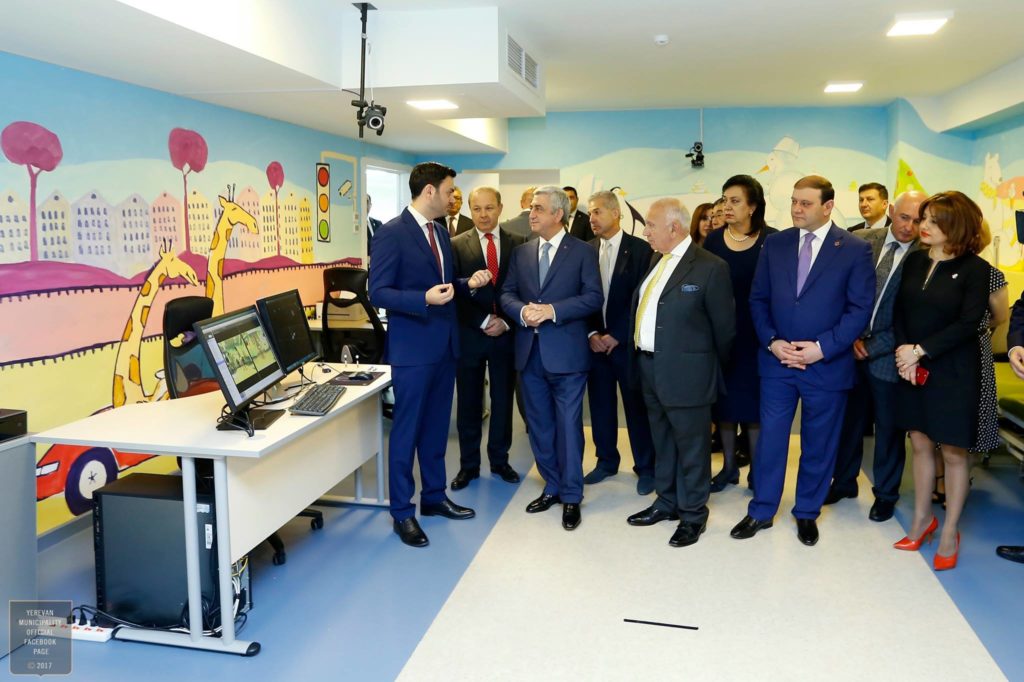
Despite Armenia’s numerous adversities, new and exciting things, such as in the arts, business, medicine, science, and technology are taking place. Often times, though, the slow but steady progress that has been achieved in the various fields are overlooked, especially, when a segment of the population lives in poverty and hopelessness.
A couple of days prior to my return home, an Armenian-American Diasporan asked me, “And what will you write about corruption?”
I paused for a moment and said, “I’m not sure; I’ll have to think about your question.”
That evening, as I opened the entrance door to the apartment building where I was staying, the Diasporan’s question and Catholicos Aram’s quote were on my mind as I climbed the 76 stairs to the top floor of the building. A couple of the floors had light, but the others did not. Those that did were the ones that had nice doors and locks, nice floormats in front of their doors, and the stairs leading to their apartments were not broken in places or crumbling. I continued to climb higher and higher until I reached the top floor. I opened my purse and fumbled in the dark for my keys. As I opened the door to the apartment and stepped into the lighted foyer, the answer to the Diasporan’s question finally came to me: Corruption weakens the fist.
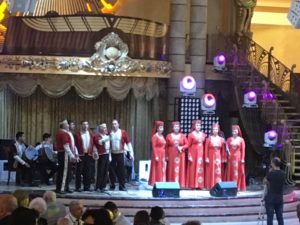
The day of my return home had arrived. As I checked in at Zvartnots International Airport, an airport that, over the years, has been transformed into a modern and efficient one, I began thinking of my flight to Yerevan just four weeks earlier. I had been seated next two men, one from Hungary and the other from Lebanon. During our conversations, the Hungarian said that he had heard and read about Armenia and wanted to see the country for himself. The Lebanese said he was going to see friends in Armenia, and perhaps buy property in one of the nearby regions. He explained that on his father’s side, he was Armenian and the grandson of genocide survivors, and on his mother’s side, Greek and Lebanese, and married to a Lebanese girl. As we talked about Armenia and the tourists sights he planned to visit, he said, “Now that I have a young son, and a daughter on the way, I want to improve my Armenian so that I can teach my children the language.”
After taking my seat on the plane, I began chatting with the passengers seated next to me. They were tourists from Asia who had vacationed in Armenia. “How did you like Armenia?” I asked.
“I liked the people and churches, especially the one church you reach by cable car,” said the woman.
“I liked Yerevan and the food, but mostly, just as my wife, I liked the people,” said the man.
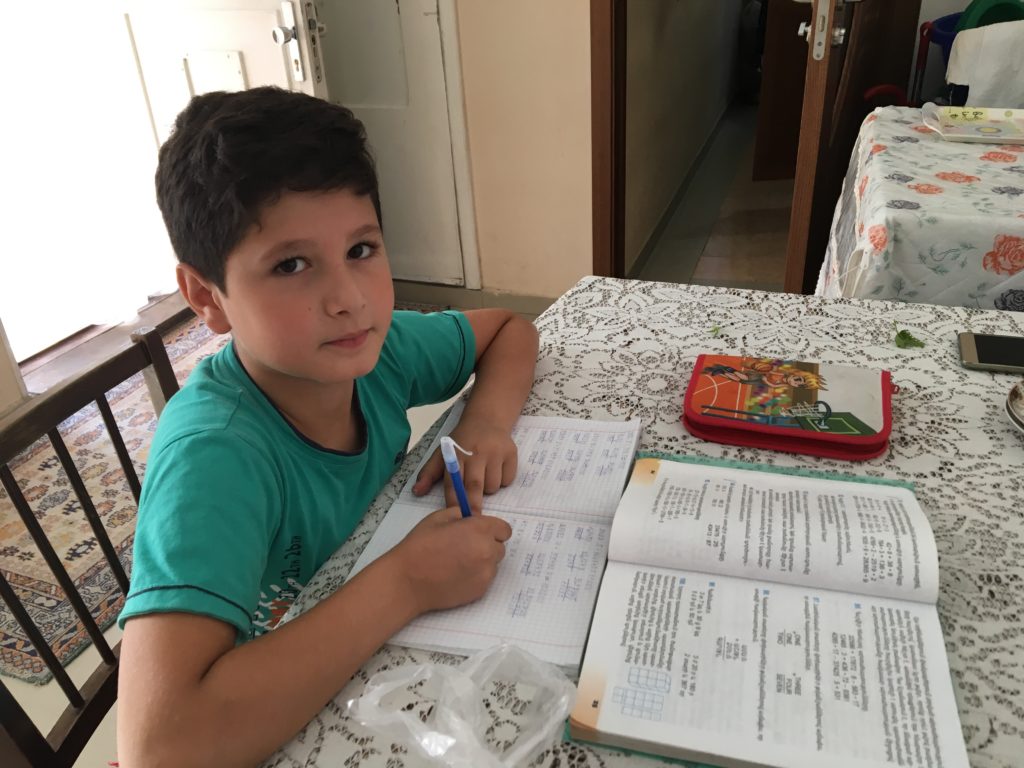
When our chat ended, I settled back into my seat, opened the book I had been reading on the flight to Armenia and came to a passage that gave me pause for thought. I read it once, and then again: “When one rules over men in righteousness, when he rules in the fear of God, he is like the light of morning at sunrise on a cloudless morning, like the brightness after rain that brings the grass from the earth.” (2 Samuel 23:3-4)
May Armenia’s path always be green.
***
Editor’s Note: Longtime Armenian Weekly contributor and supporter Knarik O. Meneshian wrote this piece in March 2018. We at the Armenian Weekly are eternally grateful for her support and contributions over the years.
The post Meneshian: Wealth of a Nation appeared first on The Armenian Weekly.
Source: Armenian Weekly
Link: Meneshian: Wealth of a Nation
